| Indian As He Was and As He Is (1857) DBQ Worksheet |
|---|
| www.studenthandouts.com ↣ U.S. History ↣ Westward Expansion ↣ Worksheets |
|
The following reading is taken from Town’s Fourth Reader, published in the United States in 1857. Town’s was a popular textbook throughout the United States in the mid-1800s, during a time when white settlers were moving into the American west. As you read the text and answer the questions placed throughout it, imagine that you are a student reading Town’s circa 1860. "The Indian, As He Was, and As He Is" by Sprague Not many generations ago, where you now sit circled with all that exalts and embellishes civilized life, the rank thistle nodded in the wind, and the wild fox dug his hole unscared. Here lived and loved another race of beings. Beneath the same sun that rolls over your heads, the Indian hunter pursued the panting deer; gazing on the same moon that smiles for you, the Indian lover wooed his dusky mate. 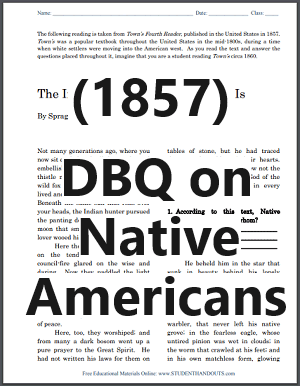 Here the wigwam blaze beamed on the tender and helpless, the council-fire glared on the wise and daring. Now they paddled the light canoe along your rocky shores. Here they warred; the echoing whoop, the bloody grapple, the defying death-song, all were here; and when the tiger strife was over, here curled the smoke of peace. Here the wigwam blaze beamed on the tender and helpless, the council-fire glared on the wise and daring. Now they paddled the light canoe along your rocky shores. Here they warred; the echoing whoop, the bloody grapple, the defying death-song, all were here; and when the tiger strife was over, here curled the smoke of peace.Here, too, they worshiped; and from many a dark bosom went up a pure prayer to the Great Spirit. He had not written his laws for them on tables of stone, but he had traced them on the tables of their hearts. The poor child of nature knew not the God of revelation, but the God of the universe he acknowledged in every thing around. 1. According to this text, Native Americans prayed to whom? He beheld him in the star that sunk in beauty behind his lonely dwelling; in the sacred orb that flamed on him from his mid-day throne; in the flower that snapped in the morning breeze; in the lofty pine, that defied a thousand whirlwinds; in the timid warbler, that never left his native grove; in the fearless eagle, whose untired pinion was wet in clouds; in the worm that crawled at his feet; and in his own matchless form, glowing with a spark of that light, to whose mysterious Source he bent in humble, though blind, admiration. And all this has passed away. Across the ocean came a pilgrim bark, bearing the seeds of life and death. The former were sown for you; the latter sprang up in the path of the simple native. Two hundred years have changed the character of a great continent, and blotted forever from its face a whole peculiar people. Art has usurped the bowers of nature, and the anointed children of education have been too powerful for the tribes of the ignorant. 2. According to the text, what group of people brought “the seeds of life and death” to what is now the United States? Here and there a stricken few remain; but how unlike their bold, untamed, untameable progenitors! The Indian of falcon glance and lion bearing, the theme of the touching ballad, the hero of the pathetic tale, is gone! and his degraded offspring crawl upon the soil where he walked in majesty, to remind us how miserable is man, when the foot of the conqueror is on his neck. 3. Imagine that you are a Native American of 1857, reading this textbook. How might you react to being referred to as the “degraded offspring (of the Native Americans of pre-colonial times that) crawl(s) upon the soil…”? Explain your answer. As a race, they have withered from the land. Their arrows are broken, their springs are dried up, their cabins in dust. Their council-fire has long since gone out on the shore, and their war-cry is fast dying to the untrodden west. Slowly and sadly they climb the distant mountains, and read their doom in the setting sun. They are shrinking before the mighty tide which is pressing them away; they must soon hear the roar of the last wave, which will settle over them forever. Ages hence, the inquisitive white man, as he stands by some growing city, will ponder on the structure of their disturbed remains, and wonder to what manner of person they belonged. They will live only in the songs and chronicles of their exterminators. Let these be faithful to their rude virtues as men, and pay due tribute to their unhappy fate as a people. 4. You are living more than 150 years after this text was written. Based on your knowledge of Native Americans today, how accurate were the writer’s predictions about the fate of Native Americans? Explain your answer. 5. In what ways does the writer seem to be expressing sadness at the alleged passing of Native Americans, while treating this as inevitable? Click here to print. Answer Key: (1) Great Spirit; (2) Pilgrims; (3-5) Answers will vary. Note to teachers: This reading makes a great conversation piece with students. Discussion questions might include: How does this reading compare or contrast with your notions of what was taught in a 19th-century schoolhouse (for example, from television programs like Little House on the Prairie)? Would Americans of today consider this text to be racist, and why? |
 | 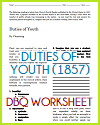 |  | 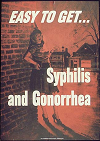 | 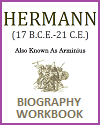 | 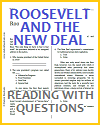 |
| www.studenthandouts.com ↣ U.S. History ↣ Westward Expansion ↣ Worksheets |








